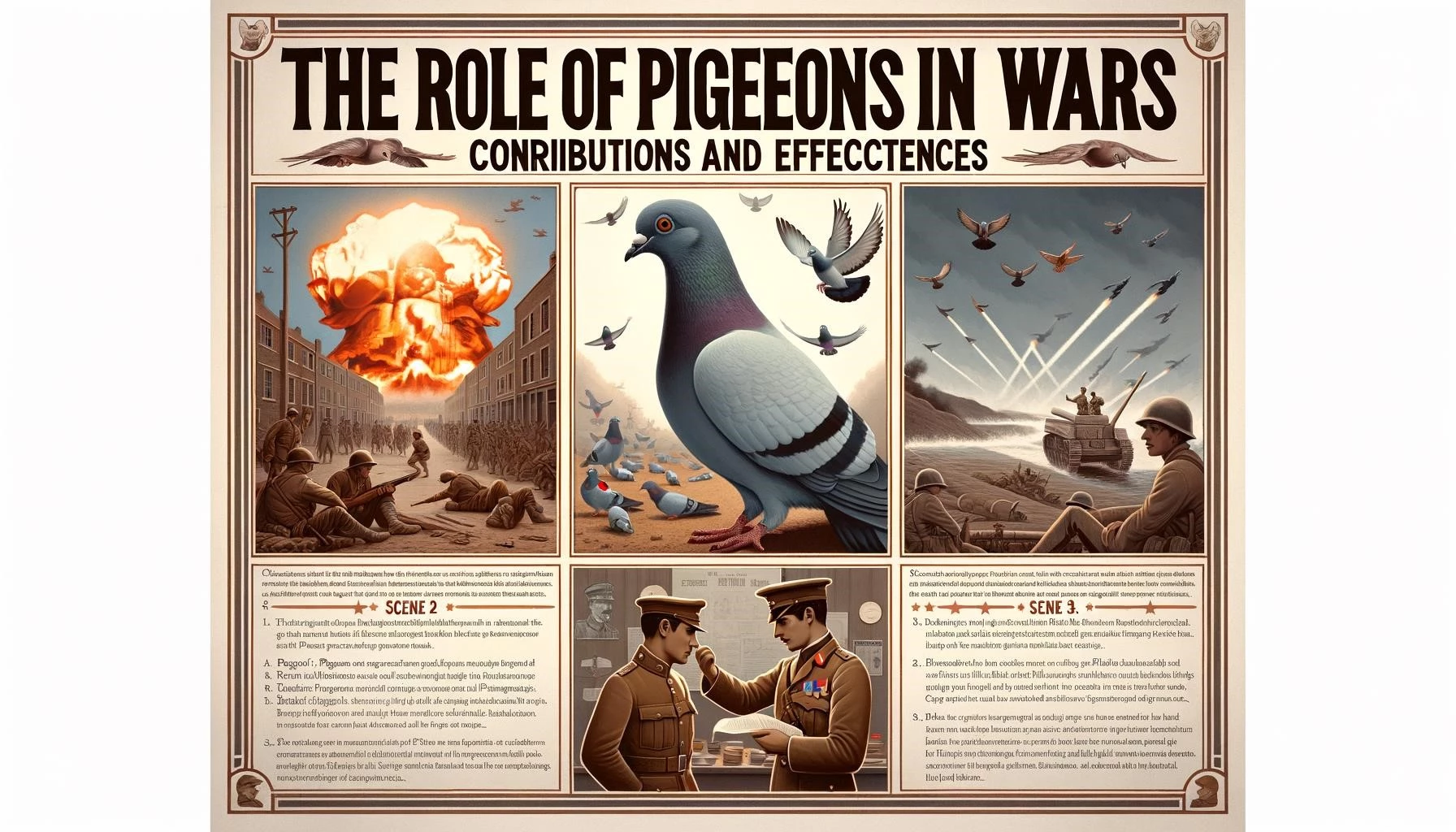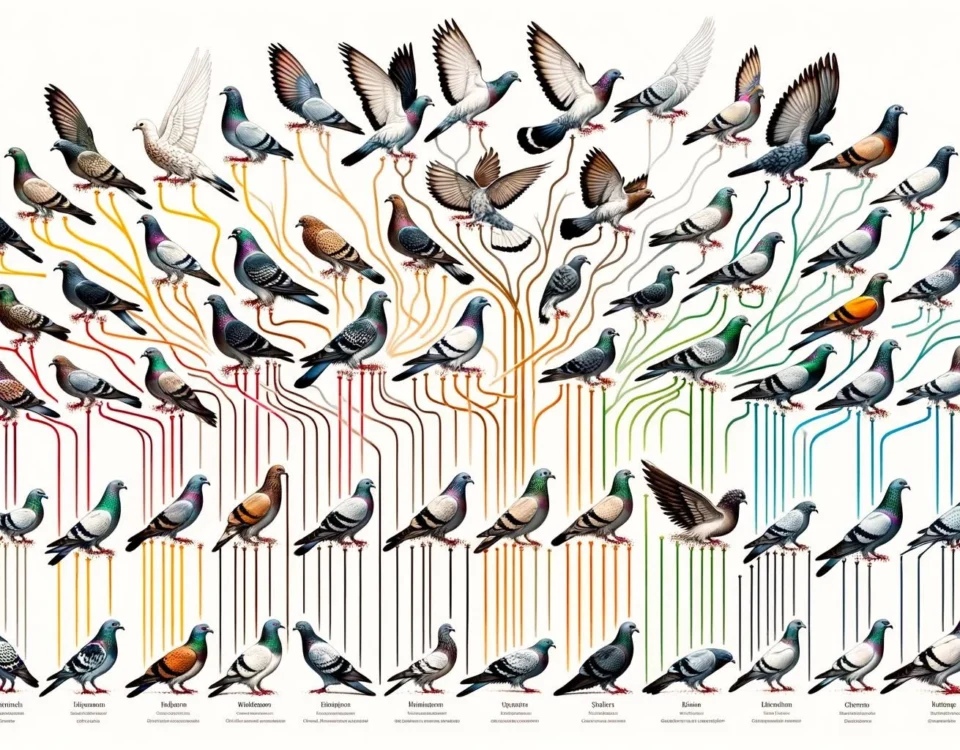Pigeons, with their diverse breeds and fascinating history, have been companions to humans for thousands of years. Among the myriad of pigeon breeds, each has its unique characteristics, history, and role in human culture. This entry focuses on the general aspects of pigeons, particularly highlighting the habitats of wild pigeons, to provide a comprehensive understanding of these versatile birds.
Pigeons, belonging to the family Columbidae, are a group of birds that encompasses both wild and domesticated species. The most common ancestor of all domestic pigeon breeds is the Rock Pigeon (Columba livia), which still exists in the wild today. Pigeons have been domesticated for food, as pets, for racing, and even as messengers due to their exceptional homing abilities. Despite the widespread domestication, wild pigeons continue to thrive in various habitats around the world.
Habitats of Wild Pigeons
Wild pigeons, including the ancestral Rock Pigeons, have adapted to a wide range of environments. Their habitats can be broadly categorized into the following:
| Habitat Type | Characteristics | Examples of Locations |
|---|---|---|
| Cliffs and Rocky Outcrops | Natural habitats of Rock Pigeons, providing nesting sites and protection. | Coastal cliffs of the British Isles, Mediterranean regions |
| Urban Areas | Feral pigeons, descendants of domesticated pigeons, thrive in cities due to the abundance of food and nesting sites. | Cities worldwide, including New York, London, and Mumbai |
| Forests and Woodlands | Some pigeon species prefer dense forests and woodlands for food and nesting. | Band-tailed Pigeons in North American forests |
| Grasslands and Fields | Open habitats where pigeons forage for seeds and grains. | Eurasian Collared-Doves in agricultural lands across Europe and Asia |
| Islands | Isolated environments where pigeons can evolve unique characteristics. | Dodo in Mauritius (extinct), Nicobar Pigeon in Southeast Asia and the Pacific |
Cliffs and Rocky Outcrops
The Rock Pigeon, the progenitor of domestic pigeons, originally inhabited cliffs and rocky outcrops. These natural fortresses offer protection from predators and provide ample nesting sites. The birds’ affinity for such environments is mirrored in their adaptation to urban landscapes, where buildings mimic the vertical faces of cliffs.
Urban Areas
Urban areas have become a prominent habitat for feral pigeons, which are essentially domestic pigeons that have returned to the wild. Cities offer an abundance of food sources, from discarded human food to insects and plants, as well as numerous nooks and crannies for nesting. The adaptability of pigeons to urban environments showcases their intelligence and resilience.
Forests and Woodlands
While Rock Pigeons prefer open or semi-open landscapes, other pigeon species, such as the Band-tailed Pigeon, inhabit forests and woodlands. These environments provide a rich source of food, including fruits, seeds, and plants, as well as sheltered nesting sites in trees.
Grasslands and Fields
Grasslands and agricultural fields are crucial habitats for several pigeon species that feed on the seeds and grains found in these areas. The Eurasian Collared-Dove, for example, has spread across Europe and Asia, thriving in farmlands and rural settings.
Islands
Islands have given rise to some of the most unique pigeon species due to their isolation. The now-extinct Dodo, a flightless bird, was native to Mauritius, while the Nicobar Pigeon, known for its colorful plumage, inhabits the Andaman and Nicobar Islands. Island habitats often allow for the development of distinct traits due to limited predation and competition.
Interesting Facts
- Pigeons have been used as messengers due to their homing ability, capable of finding their way home over long distances.
- The Dodo, a relative of pigeons and doves, became extinct in the 17th century due to human activities.
- Pigeons can recognize themselves in mirrors, a sign of self-awareness that is rare among non-mammalian species.
- In urban environments, pigeons have been observed using human-made structures to create “artificial cliffs” for nesting, demonstrating their adaptability.
Pigeons, with their diverse habitats and remarkable adaptability, continue to fascinate and coexist with humans. From the rocky cliffs where their ancestors dwelled to the urban jungles they now often call home, pigeons have demonstrated an incredible ability to thrive in a variety of environments. Their presence around us is a testament to their resilience and the deep-rooted connection between humans and these versatile birds.









